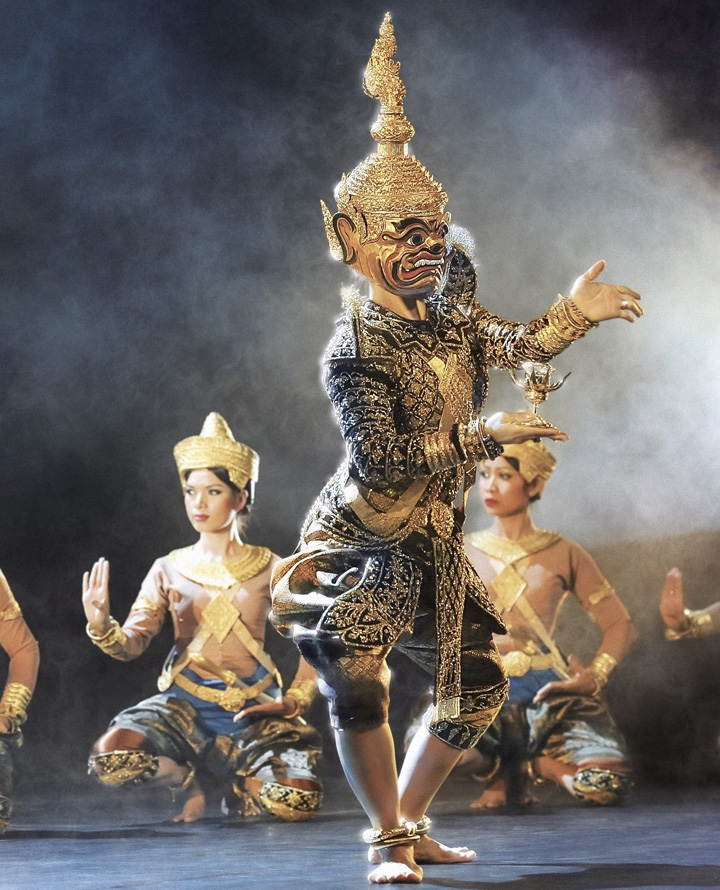

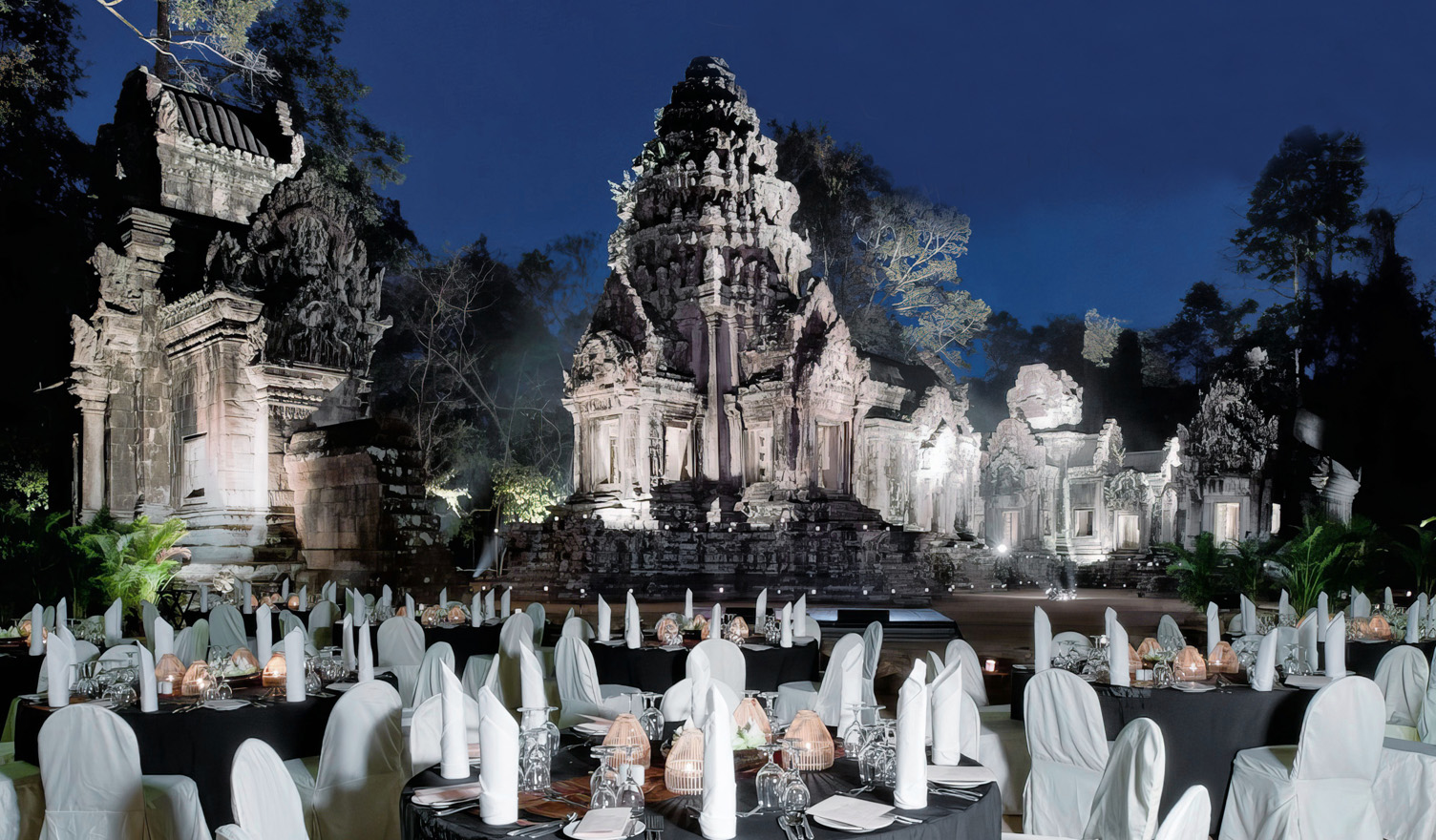
Atmosphere
SPIRITUAL, BUDDHISIMCapacity
150 GUESTSWet Weather Backup
RESTRICTED TO DRY SEASON NOV-MARRestriction
CONTROLLED BY APSARA AUTHORITIES
Arriving at Thommanon Temple, a small and elegant temple located east of the Gate of Victory of Angkor Thom, the architecture echoes the elements of its slightly younger but much larger brother, Angkor Wat.
Stepping into the restored splendour of the 900-year-old temple complex, ones eyes drawn to the two cauldrons of flame that welcome guests at the entrance. Then escorted by a traditional band through bare-chested temple guards with their ivory-tipped antique spears. Torches light the way as guests process through the temple, arriving in front of a field of candles that illuminate the ancient structure. Monks, in their saffron robes, chant a welcome prayer from the temple alcoves.
The air is filled with the sound of music and the smell of incense. The Royal Apsara Ballet performers, dressed in their traditional costumes, glide through the shadows, their graceful movements casting intricate patterns on the walls.
The music is hauntingly beautiful, and the dancers' movements are mesmerising. After the dance, a Khmer infused banquet is served followed by a high-octane performance by the locally famed Phare circus. Throughout the evening, group’s enjoy a different cultural performance in between each of the five courses of gourmet Khmer cuisine.

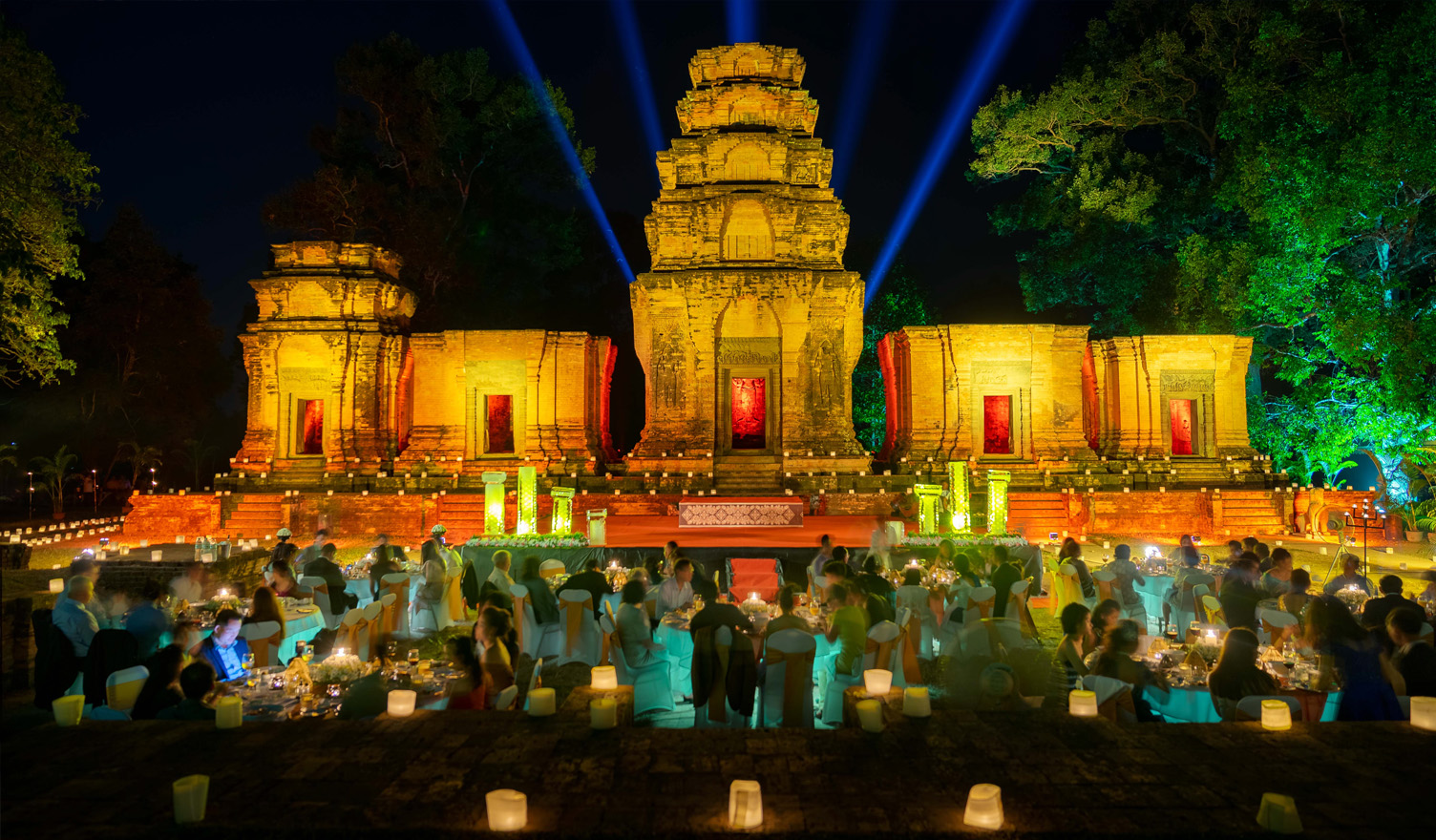
Atmosphere
SPIRITUAL, BUDDHISIMCapacity
150 GUESTSWet Weather Backup
RESTRICTED TO DRY SEASON NOV-MARRestriction
CONTROLLED BY APSARA AUTHORITIES
Prasat Kravan Temple is a small and elegant temple located east of the Gate of Victory of Angkor Thom. Despite many temples of Angkor being in partial ruins, Prasat Kravan is still in good condition and a perfect location for a private event.
One of the first temples built on the plain of Angkor; Prasat Kravan is 1100 years old and dedicated to the Hindu god Vishnu. It is a five-tower temple and possesses the only carved brick bas relief ever built by the Khmer Empire. The temple was built without using mortar and is one of the last brick temples constructed by the Empire.
Guests arrive at the candlelit front of the temple and are welcomed by the atmospheric sound of drummers. Then a traditional band escorts the group by torch and candlelight to the front of the temple and around to the dining area at the rear. Here an open air dining set up glows by candles and soft lighting whilst the temple itself is lit up by a striking light show. Whilst dinner is served, guests are treated to an array of cultural entertainment from the Royal Ballet of Phnom Penh (special arrangement), spiritual Khmer dancing and music or more upbeat Phare Circus acts.
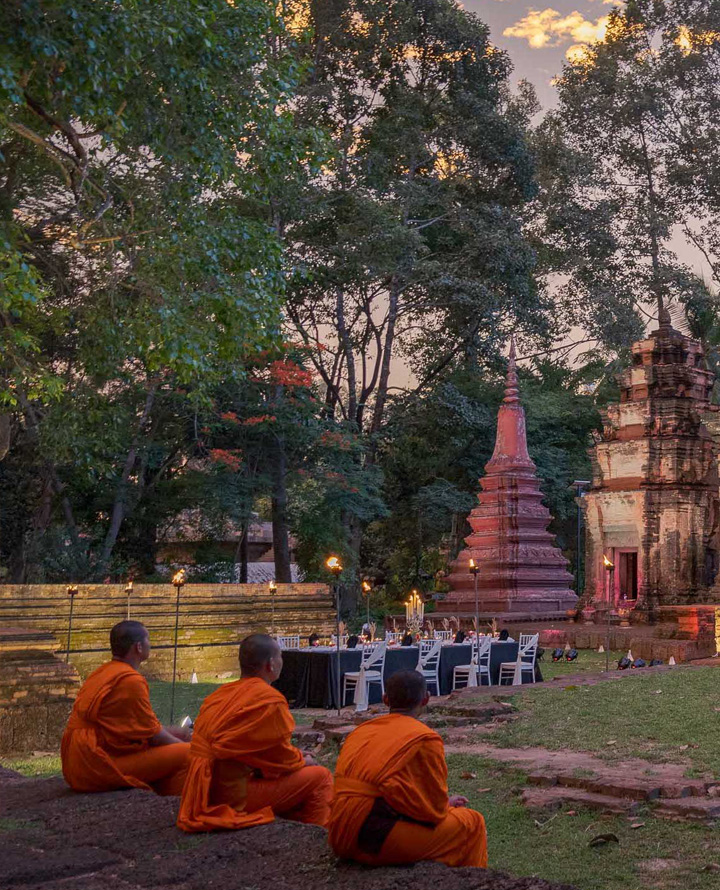

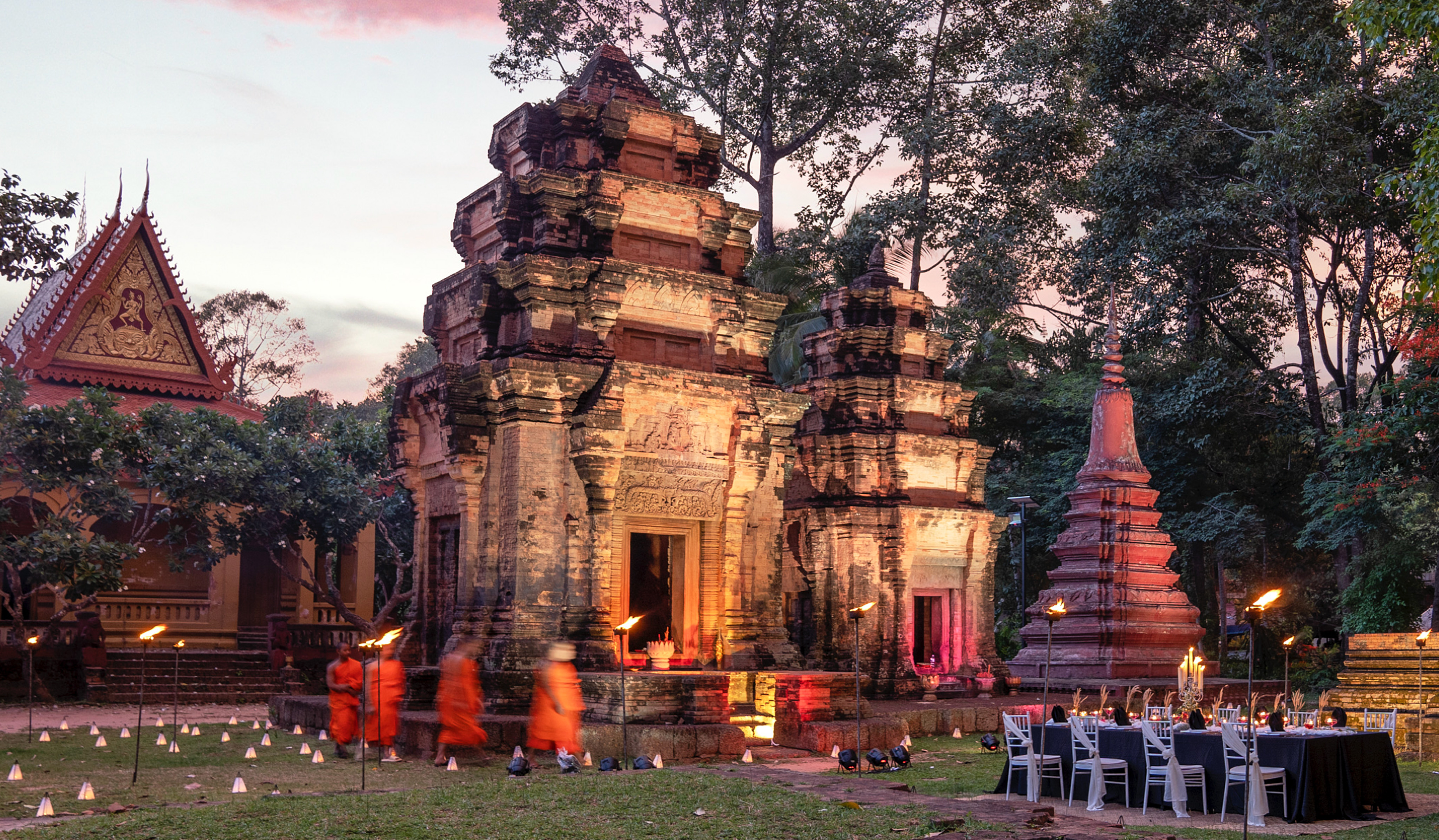
Atmosphere
SPIRITUAL, BUDDHISIMCapacity
70 GUESTSWet Weather Backup
RESTRICTED TO DRY SEASON NOV-MARRestriction
CONTROLLED BY APSARA AUTHORITIES & EXCLUSIVE TO ASIA CONCIERGE
Within Siem Reap town next to the river, lies a vibrant working Pagoda. This relatively small temple is well-preserved and has some beautiful features. The temple is made of sandstone and features a number of intricate carvings. The main sanctuary of the temple is topped by a five-tiered roof.
We step through the gates of this hidden oasis and are immediately transported to another world. The temple grounds are peaceful and tranquil, with lush greenery and towering sandstone structures. The air is filled with the sound of birdsong and the gentle trickle of water from a nearby fountain. We can smell the sweet scent of incense wafting from the main sanctuary.
As we enter the temple grounds, we see intricate carvings that adorn the walls and pillars. The carvings depict scenes from Hindu mythology, as well as everyday life in ancient Cambodia.
Monks in their orange saffron robes appear from the alcoves of the ruins chanting a blessing in Pali (Buddhist language) as guests make their way to their tables. An evening of fine dining Khmer cuisine is prepared under an evocative backdrop of both the ruins and the modern day pagoda behind it. The setting is ideal for a genteel performance of Khmer dance and art or a string quartet. For something more energetic, the Phare Cambodia circus can perform on the natural stage beside the ruins.

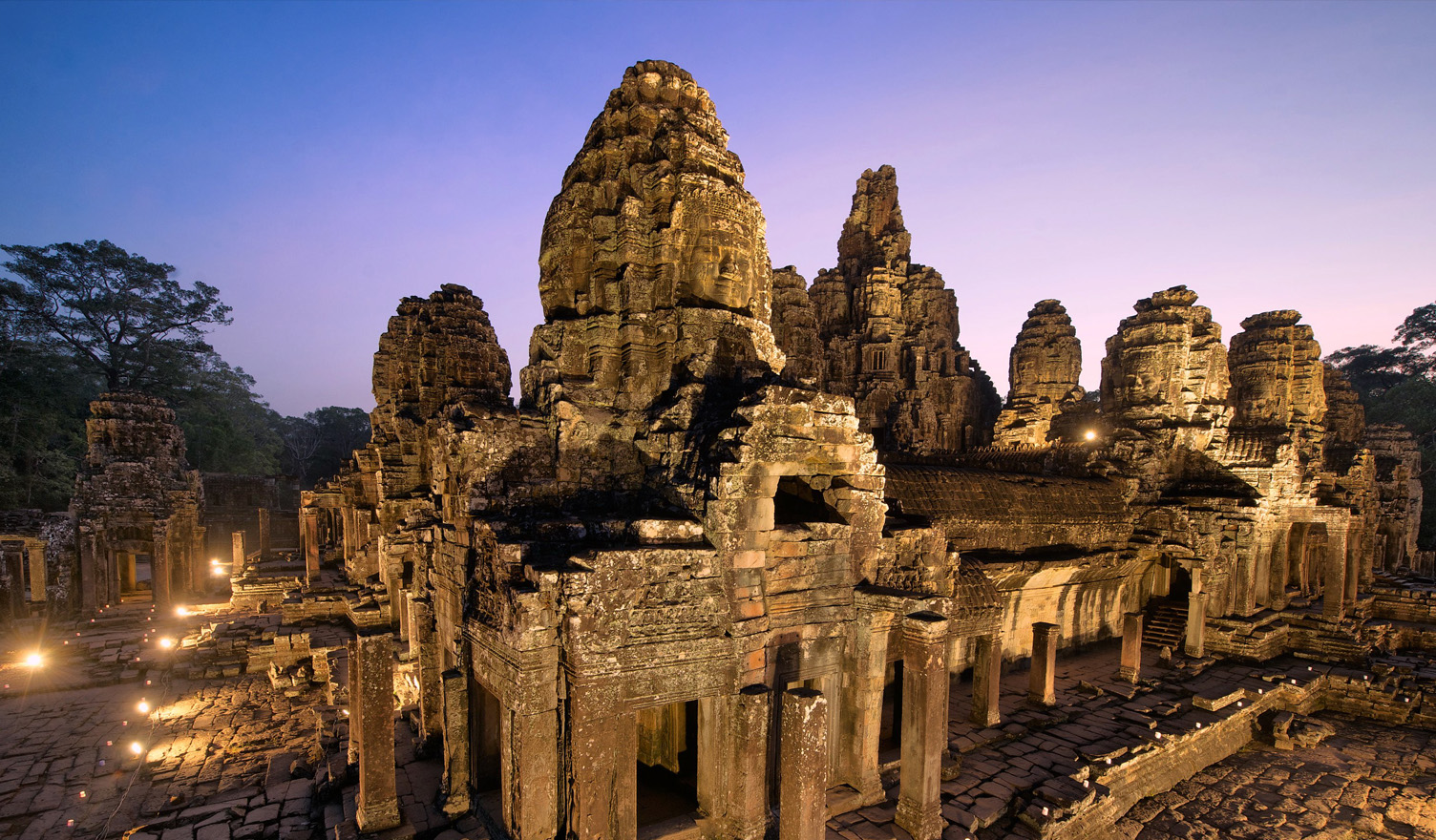
Atmosphere
SPIRITUAL, BUDDHISIMCapacity
200 GUESTSWet Weather Backup
RESTRICTED TO DRY SEASON NOV-MARRestriction
CONTROLLED BY APSARA AUTHORITIES & EXCLUSIVE TO ASIA CONCIERGE
After Angkor Wat itself the Bayon is arguably Cambodia’s most famous temple site. This colossal temple was built in the late 12th or early 13th century with the exact date being unknown. It was constructed well after Angkor Wat by a century or so and whilst not the last temple built in Angkor, it was certainly the last of the large state temples to be built. It was the centerpiece of the Buddhist king Jayavarman VII’s massive temple building spree that included many nearby temples.
The single most dramatic feature of the Bayon are its 173 gigantic faces remaining its towers with debate and theories going on to this day over who the faces actually represent.
On special, and rare, occasions, the Bayon is lit up at night, whilst the surrounding jungle is silent and asleep. Regular visitors are not allowed after sunset making for an eery spectacle of man made grandeur in an environment enveloped by the natural world.
Guest arrive at the East gate entrance where cocktails and canapés are served as gibbons and monkeys can be heard settling in for the night. Wandering around to the side of the temple a fine dining setting is placed in full view of its gigantic towers, with its faces lit up and watching over its guests.
Monks chant in the alcoves as dinner is served whilst elegant Khmer dance performances provide entertainment between courses. This is a grand event that is highly priced and highly prized.
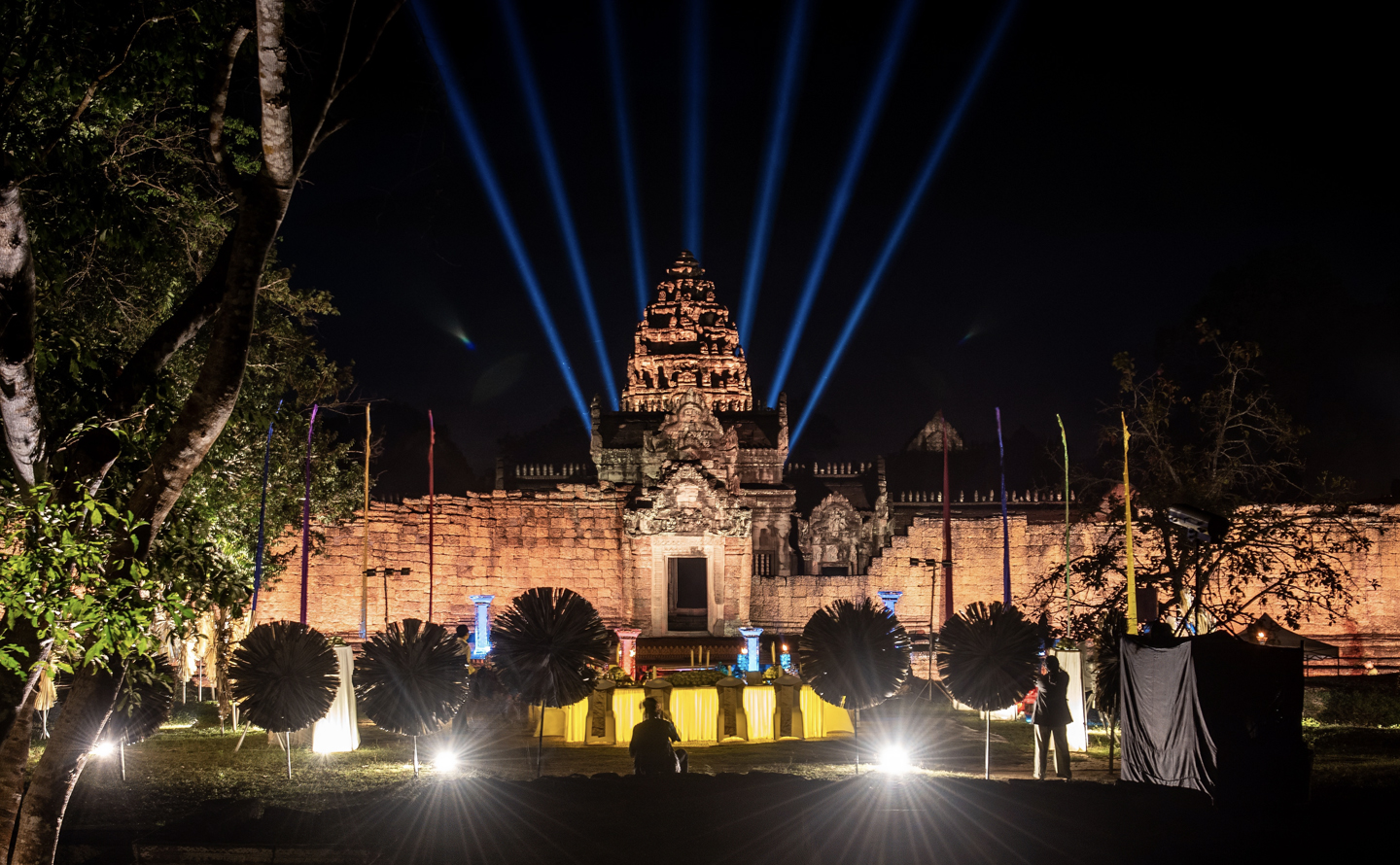
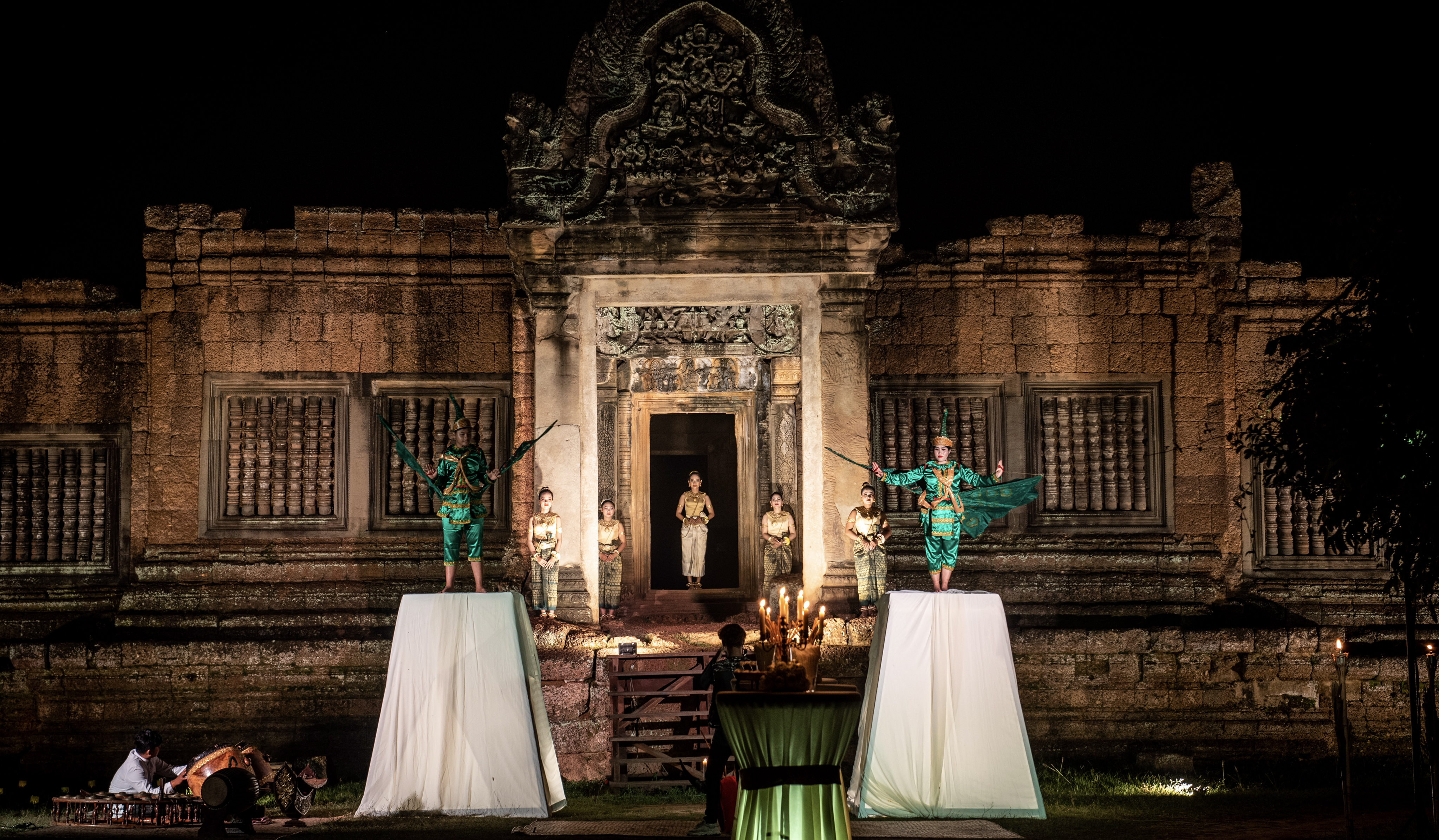
ATMOSPHERE
SPIRITUAL, BUDDHISIMCAPACITY
120 GUESTSWET WEATHER BACK UP
RESTRICTED TO DRY SEASON NOV-MARRESTRICTIONS
CONTROLLED BY APSARA AUTHORITIES
Lying some 30 minutes journey time from Siem Reap, Banteay Samre temple is a hidden gem and considered perhaps one of the most beautiful of the smaller ancient temple sites. Built in the early 11th century as a Hindu temple under the reign of King Suryavarman II (reign 1113 – c.1150 AD), Banteay Samre has been beautiful preserved over the centuries and is famed for its predominantly sandstone build, which is a blaze of colour as the sun sets.
The temples pediments and lintels are decorated with very intricate and well preserved carvings of Hindu mythological stories and Buddhist depictions.
Whilst the dining and entertainment at Banteay Samre is the same offering at other temple sites, the location feels more exclusive and hidden. The intricate sandstone walls and carvings are beautifully highlighted by soft lighting at night, whilst its many alcoves are the perfect setting for elegant cultural performances of dance and music, as well as the evocative sound of monks chanting in unison.
Due to the longer distance from town and its intimacy, Bantreay Samre is not often used for private events, and herein lies the attraction.

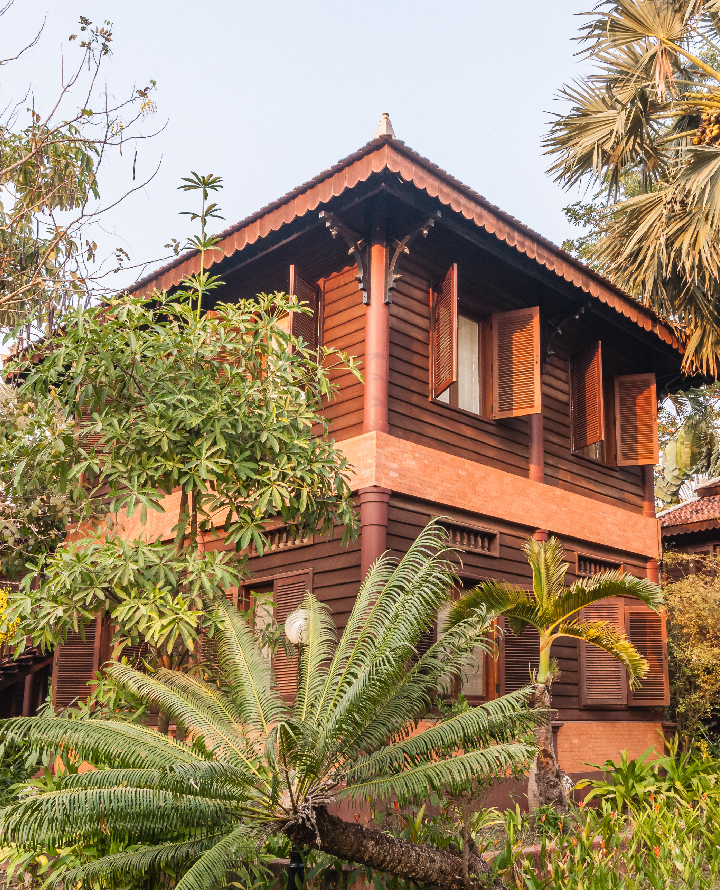
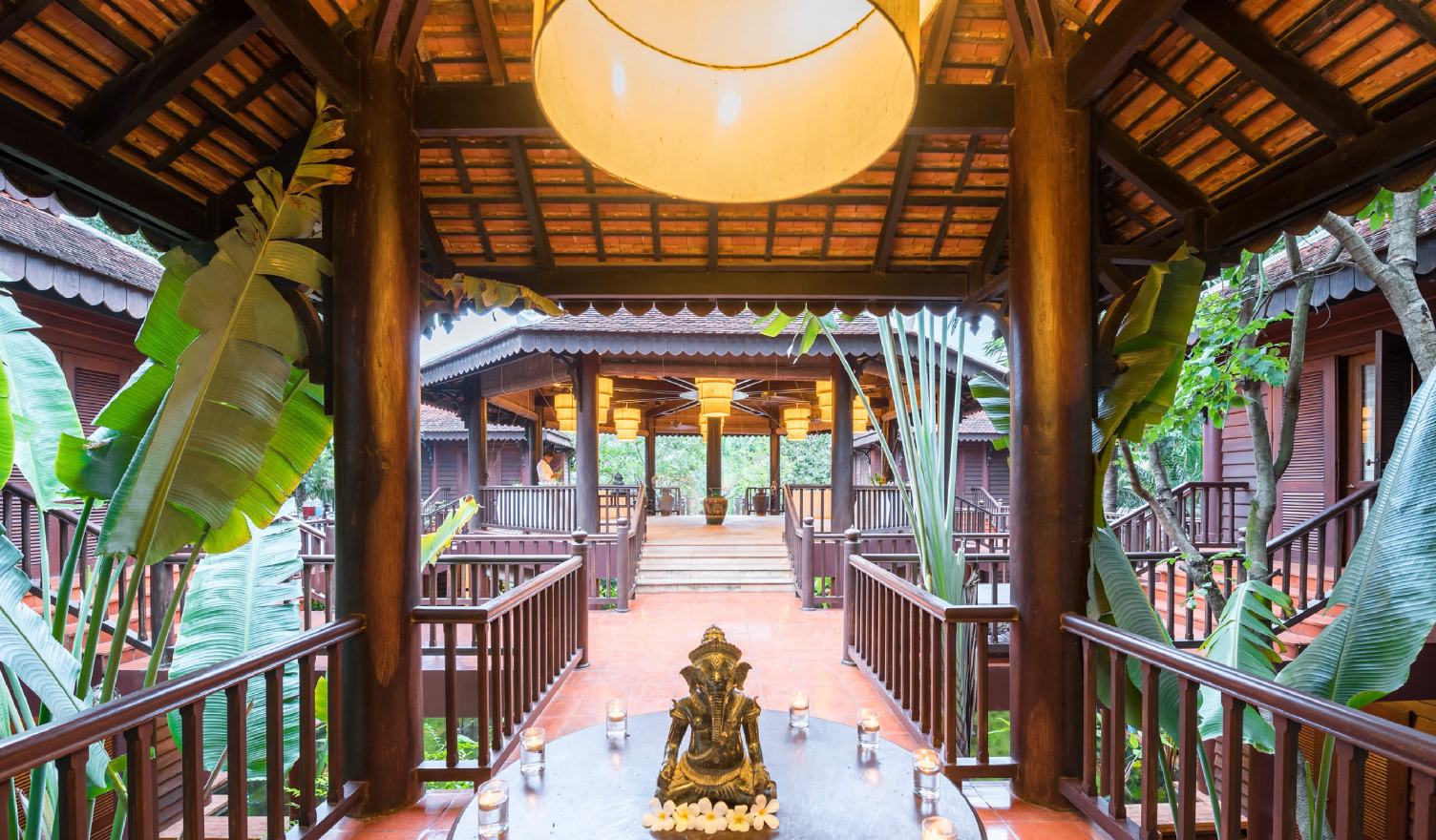
ATMOSPHERE
KHMER TRADITIONAL HOMECAPACITY
80 GUESTSWET WEATHER BACK UP
PUBLIC SPACE OF PRIVATE VILLASRESTRICTIONS
NONE
The Athakon house is built on two large rice fields, which for many years were fed by streaming water originating from the Phnom Kulen holy mountain. The unique shape of the house is inspired by classic Khmer architecture.
The center of Athakon is an octagonal shape represents the Mount Meru and is the major meeting space where we will start with a pre-dinner cocktail. At the raised ground level, the lobby is surrounded by four large pounds, filled with streaming water, plants and waterliles.
At the top floor one can sense the open space beyond with a 360 degree view all around the landscape. Striking sunsets can be experienced from the high lifted lobby, while bridges and steps connect the lobbies with four central corner houses.
Descending the stairs, guests enter the garden and poolside which is the setting for a Khmer, cultural enthused evening with delicate lighting highlighting the architecture of the surrounding villas.
During the course of the evening various performances of Khmer art and dance take place including the option to bring in the famed Phare Circus acts for a touch of contemporary meets comedy.
Dinner may be plated or buffet style in a casual garden environment.
